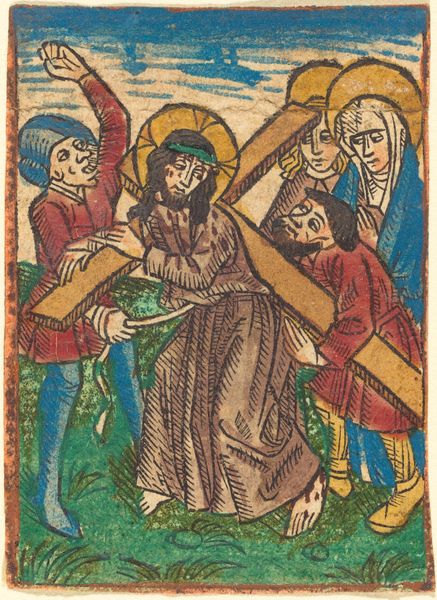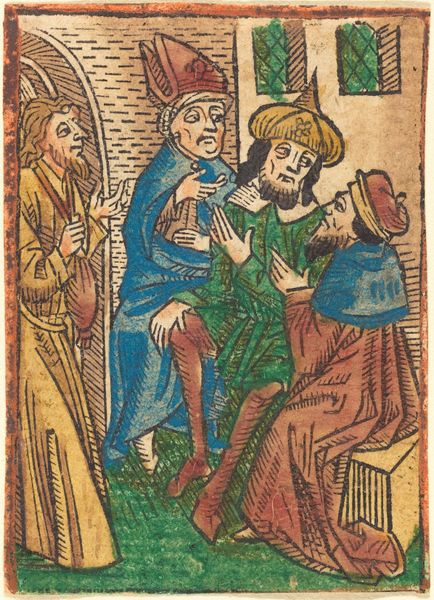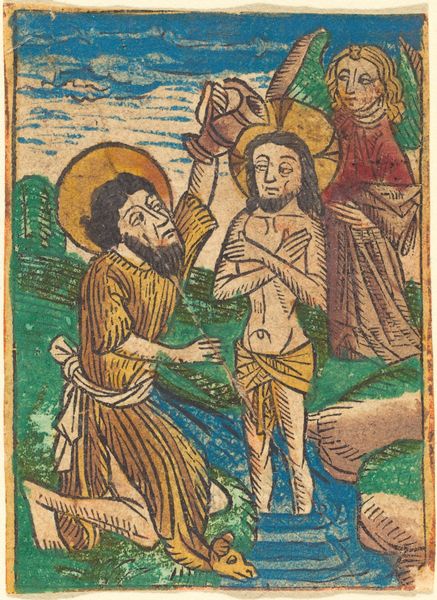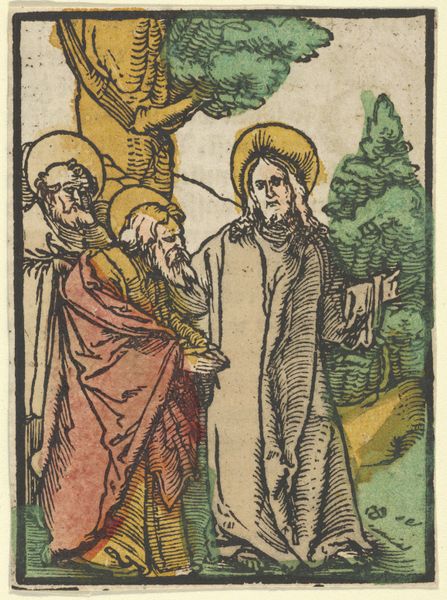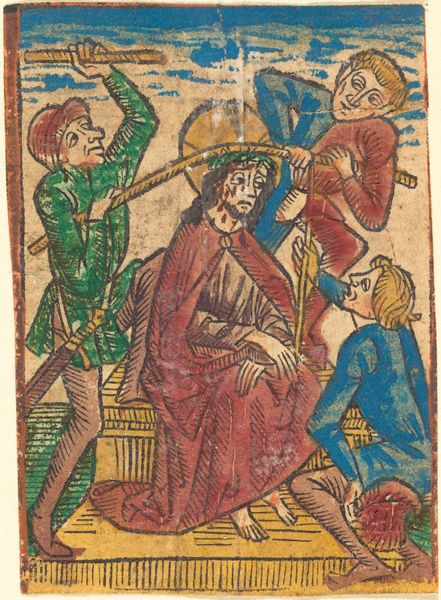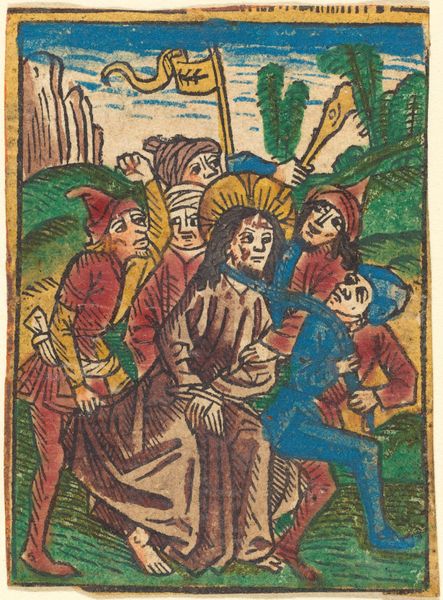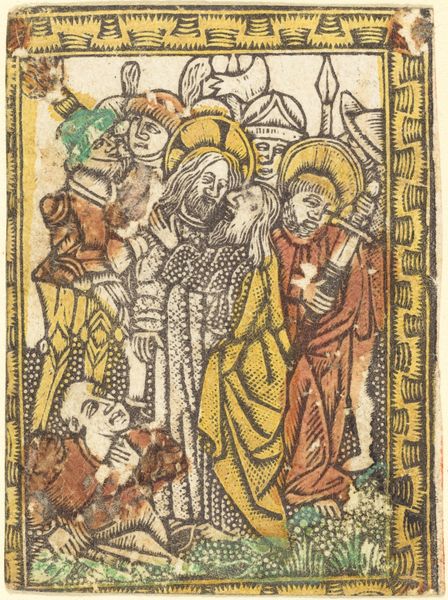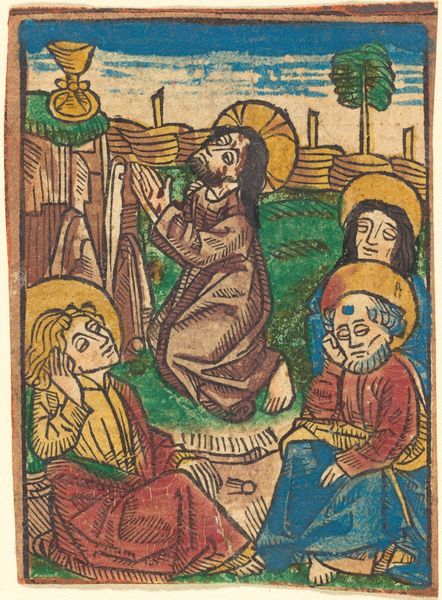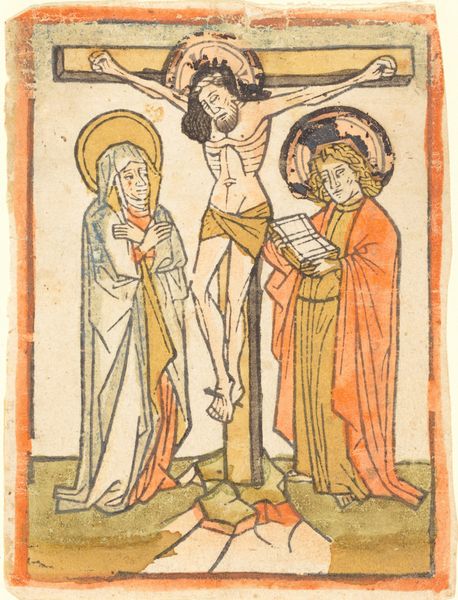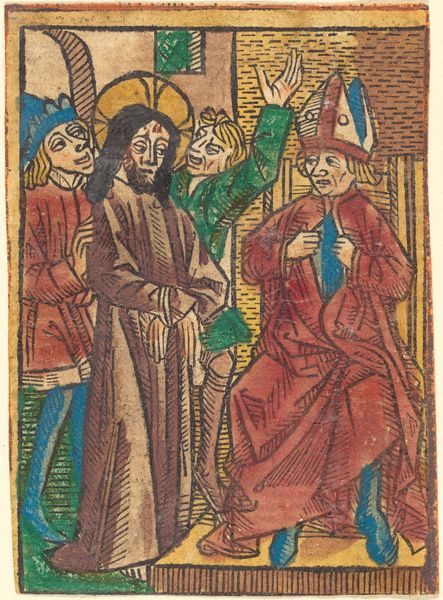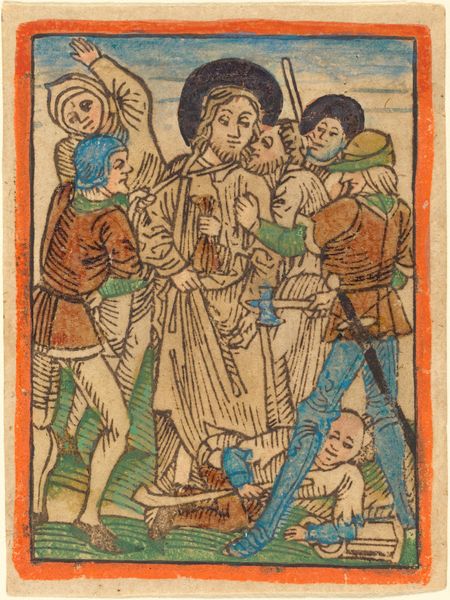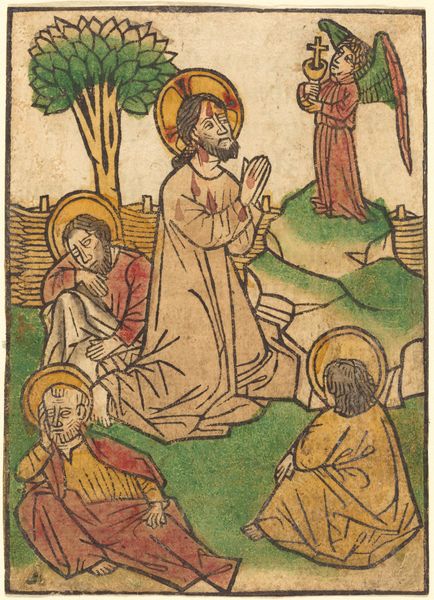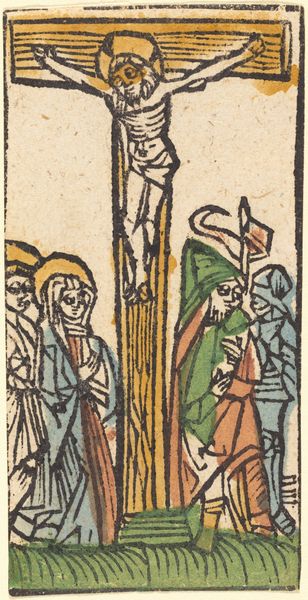
print, woodcut
#
narrative-art
# print
#
figuration
#
coloured pencil
#
woodcut
#
naive art
#
history-painting
#
northern-renaissance
#
watercolor
Copyright: National Gallery of Art: CC0 1.0
Curator: I’m immediately struck by the flattened perspective and how every figure seems crammed into this small space. There's a certain naivety to the rendering. Editor: Indeed. This woodcut, likely created around 1490, is titled "Betrayal." Considering the sociopolitical contexts in that era, this narrative could symbolize various betrayals beyond the immediate religious implications—the fall of empires, societal divisions. It would be fruitful to discuss these narratives. Curator: You see so much; I see a work clearly made with colour pencils and watercolors and the Northern Renaissance style shines through, with its focus on intricate detail even within this relatively modest scale. Note, for instance, how the artist uses thin, consistent lines, which define the figures but also flatten them against the background. Editor: Considering history-painting, what's compelling is that we have an anonymous creator capturing a historical moment but doing so through a particular lens. In my view this is narrative-art with potential. The halo around Christ underscores his inherent divinity, yet there's violence implied in every gesture, with each figure’s engagement of weaponization and capture.. This resonates powerfully within discourses around faith, power, and sacrifice. Curator: I concede there are thematic concerns; but in terms of technique and expression, there are clear aesthetic preferences. Focus on the colour choices for the central figure: the subtle shifts between the ochre and brown which brings forward the most important personage here and allows it to standout above the rather bright and colour heavy background. Editor: That said, consider this piece as it stands. Are we viewing, through the work and anonymity of the artist, a depiction of religious event and historical marker; or something further still? This piece could be interpreted and applied across gender and politics today. Curator: I agree completely that its simplicity contributes to the raw emotional intensity. In focusing on this specific reading, however, we must acknowledge our situated viewpoints in discussing artwork like "Betrayal." Editor: This piece, on multiple levels, asks difficult questions with an intensity of artistic expression which is simply profound.
Comments
No comments
Be the first to comment and join the conversation on the ultimate creative platform.
